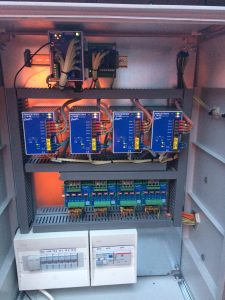‘Corrode’ – derived from the Latin ‘corrodere’, meaning ‘to gnaw to pieces.’
Corrosion is a destructive phenomenon, which in extreme cases can have disastrous consequences if it is ignored.
In basic terms, corrosion is a chemical or electrochemical reaction between two substances, usually a metal and its environment, which over time produces a deterioration of the metal and its properties.
From outdoor furniture to car body panels, the effect of corrosion is evident in our daily lives. Less obvious are the consequences it can have on our highways and buildings, as this corrosion often happens out of sight. Concrete structures are reinforced using metal bars, therefore it is crucial to protect the metal from corrosion, so it continues to support and strengthen the structure.
If untreated, the corrosion of steel reinforcing bar in concrete can lead to a decline in the reliability of the structure, and in the worst cases, the complete failure of a section of highway or the strength of a multi-storey car park – resulting in significant repair costs and endangering public safety.
Cathodic protection
 Cathodic protection, or CP is a technique used to control the corrosion of metal by making it the cathode of an electrochemical cell. An external anode is connected to the metal and an electric DC current is passed through it, so the surface of the metal becomes cathodic and does not corrode – this is known as Impressed Current Cathodic Protection or ICCP.
Cathodic protection, or CP is a technique used to control the corrosion of metal by making it the cathode of an electrochemical cell. An external anode is connected to the metal and an electric DC current is passed through it, so the surface of the metal becomes cathodic and does not corrode – this is known as Impressed Current Cathodic Protection or ICCP.
Galvanic anode protection is another method of CP, which uses an anode made of material such as zinc, which is more reactive than the metal that needs protecting. This is also known as a ‘sacrificial anode’.
Corrosion Control Services Limited (CCSL), a subsidiary of Freyssinet, is a leading specialist in the design, installation, commission and monitoring of cathodic protection and undertaking the investigation and diagnosis of corrosion-related deterioration and electrochemical rehabilitation.
Undertaking operations on reinforced concrete structures, historic steel-framed buildings, ports, harbours and buried pipelines, CCSL works closely with Freyssinet, offering innovative corrosion prevention solutions and a complete repair service for industries and infrastructures all over the world.
Cathodic protection case study
It is essential to maintain and monitor CP systems to ensure their effectiveness. CCSL carried out replacement of the remote monitoring and control equipment on the ICCP system on Tipner Interchange in Hampshire.
The M275 Tipner Interchange is a two-mile dual three-lane motorway in Hampshire, and a key gateway in and out of Portsmouth. Comprising of two bridges with two reinforced concrete piers, each pier of the interchange has 10 concrete columns and two supported cross-head beams. An ICCP system has been installed to each of the structures in 2008.
Colas engaged the services of CCSL for the replacement of the existing remote monitoring and control equipment, to undertake remedial works required following a visual inspection of the structures and to recommission the ICCP system installed on the bridge.
After initial testing with a portable power supply on-site, CCSL recommended that a new remote monitoring and control system should be installed.
Remote monitoring specialists Omniflex UK was engaged to design and manufacture the new monitoring equipment, which was then installed by CCSL within the existing ground-mounted cabinet, situated in the verge above the deck.
 The system can be operated by the client locally on an Easyview Touchscreen Interface or remotely via a web-enabled device. The client, therefore, has instant access to data and no longer needs a dedicated PC or software license to monitor the ICCP system. As a result, the management and control of ICCP assets becomes more cost effective, quicker and reliable.
The system can be operated by the client locally on an Easyview Touchscreen Interface or remotely via a web-enabled device. The client, therefore, has instant access to data and no longer needs a dedicated PC or software license to monitor the ICCP system. As a result, the management and control of ICCP assets becomes more cost effective, quicker and reliable.
Once installed and tested, CCSL commissioned the system, including:
- Energising the electrical circuits and equipment
- Starting up of all electrically powered equipment
- Intermediate performance testing
- Adjustments required
- Performance verification
- Performance monitoring
- Visual inspection
The new monitoring system installed on the M275 Tipner interchange was the first use of Omniflex equipment on a reinforced concrete structure in the UK. Following the successful installation, the CP system was recommissioned in December 2016.
For more information, call 01952 201901, email info@freyssinet.co.uk

